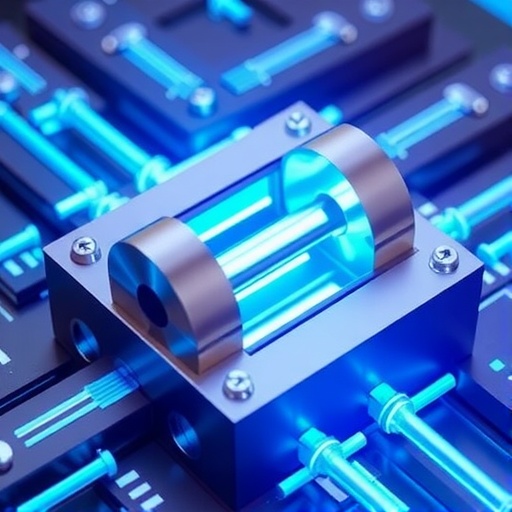The pursuit of superconductivity has long fascinated physicists and engineers alike due to its potential to revolutionize technology by allowing electricity to flow without resistance. Historically, researchers have endeavored to manipulate the conditions under which superconductivity is attained and controlled. Recent breakthroughs from an international collaboration led by the University of Jyväskylä in Finland have yielded a remarkable advancement: the first absolute superconducting switch. This innovative development allows for the complete suppression of superconductivity, offering significant implications for future technology, particularly in non-volatile memory applications.
Superconductivity is encountered in specific materials when they are cooled to a temperature below a critical point, resulting in zero electrical resistance. Such a phenomenon is not merely an academic pursuit; it holds substantial promise for applications ranging from efficient power transmission to advanced computing. A superconducting switch serves a pivotal role in these applications, functioning analogous to a standard electrical switch. It fundamentally allows for the toggling of superconductivity within a material, thus facilitating the controlled flow of electric current or the cessation of that flow, depending on its operational state.
The conceptual origins of superconducting switching can be traced back more than half a century. In 1966, Pierre-Gilles de Gennes introduced a theoretical framework for manipulating superconductivity by employing magnetic devices. His proposal laid the groundwork for future explorations into the intricate interplay between superconductors and ferromagnetic materials, where the arrangement of magnetic domains could dictate the operational state of the superconductor. The intricate relationship unveiled the potential to align magnetic moments in various configurations, which in turn influenced the critical temperature necessary for superconductivity to occur.
However, initial attempts to operationalize de Gennes’ ideas resulted in challenges. While certain structures demonstrated the capacity to influence critical temperature through magnetic orientation, the observed effects were often subtler than theoretical predictions suggested. Postdoctoral Researcher Alberto Hijano from the University of Jyväskylä emphasized that the shifts in critical temperature were not as significant as anticipated. This inherent limitation has motivated researchers to further explore mechanisms that could yield more definitive outcomes in the realm of superconducting switches.
The culmination of this research has borne fruit with the development of the absolute superconducting switch. Employing an innovative configuration, researchers selected europium sulfide (EuS) as the ferromagnetic insulator paired with niobium (Nb) as the superconductor. Central to this breakthrough is the inclusion of a gold intermediary layer bridging the EuS and Nb. This strategic addition amplifies the proximity exchange field, fostering a robust mechanism for absolute on/off switching of superconductivity. Such a refined control mechanism represents a significant elevation in the quest for practical superconducting applications.
The implications of achieving an absolute superconducting switch cannot be overstated. Non-volatile superconducting random access memory (RAM) devices become an accessible developmental prospect, promising to enhance energy efficiency profoundly. This aligns with global priorities, whereby reducing energy consumption has emerged as a clarion call for modern electronics. Traditional thermal switches contribute to persistent heat loads and energy wastage, a challenge that the new magnetic switch effectively circumvents, as noted by Hijano.
Furthermore, non-volatile memory, facilitated by the operation of superconductivity, could deliver substantial improvements in data retention without the continuous power supply required by conventional memory technologies. As data storage needs evolve in complexity and volume, the potential for superconducting technology to satisfy these demands grows in urgency and relevance.
Alongside the technical advancements, the study has attracted scholarly attention, evidenced by its publication in the highly regarded Nature Communications journal. This peer recognition underscores the rigorous methodology underpinning the research, firmly established through experimental studies that validate the technological innovations introduced. Through collaboration among esteemed institutions—including the University of Cambridge and the University of the Basque Country—the work represents a synthesis of global knowledge and expertise, embodying the international spirit of scientific inquiry.
In conclusion, the realization of de Gennes’ absolute superconducting switch marks an auspicious leap forward in superconductivity research, merging theory with tangible technological outcomes. By effectively controlling superconductivity through magnetic orientation, this breakthrough not only propels the field of superconducting technology into a new era but also potentially reshapes how we understand and implement energy-efficient solutions across diverse applications. As researchers continue to unravel the complexities of superconductivity, one can only speculate about the extraordinary technological advancements that could arise from this pivotal moment in scientific history.
Subject of Research:
Article Title:
News Publication Date:
Web References:
References:
Image Credits:
Keywords
Tags: absolute superconductivity breakthroughadvanced computing with superconductorsapplications of superconducting materialshistorical development of superconductivityimplications for power transmission technologyinternational collaboration in superconductivitynon-volatile memory applicationsresistance-free electricity flowsuperconducting switch technologysuperconductivity manipulation techniquestoggling superconductivity in electronicsUniversity of Jyväskylä research





